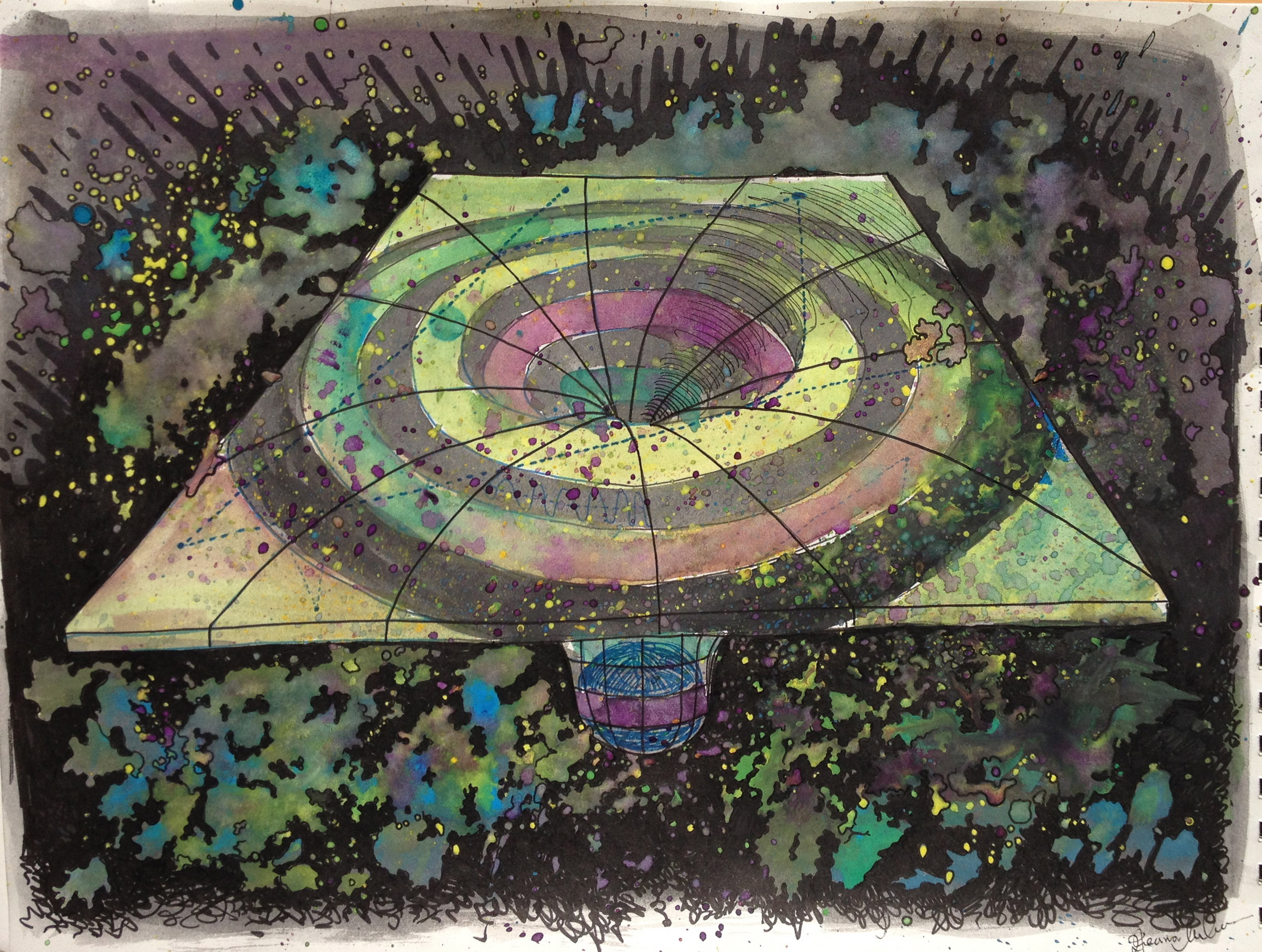Imagine a substance that you can neither touch nor see, but that makes up a majority of what we consider to be reality. You can read these words because of the light bouncing off your page or screen. This is visible light, which makes up a tiny portion of what’s known as the electromagnetic spectrum. There is a large amount of this spectrum that we cannot see – wavelengths of light that are shorter or longer than visible light. Though invisible to the naked eye, these wavelengths are measurable with specialized instruments. We build our representations of reality from these electromagnetic interactions. But there’s more to the universe than meets the eye.
Physicists have uncovered evidence of a chunk of the universe that does not interact with electromagnetic energy whatsoever. No human or instrument will ever see or touch it. This substance is known as dark matter. Dark matter neither emits nor reflects light. It freely passes through objects and is eight times more abundant than ‘ordinary’ matter. Extraordinary claims about these ghost-like particles demand extraordinary evidence. Gil Holder, professor of cosmology and astrophysics at McGill, recently gave a Public Astro Night lecture entitled “Does This Dark Matter Make My Galaxy Look Fat?”
In his lecture, Holder first explained that observable mass (stars, gas, and dust) is concentrated at the centre of galaxies. More mass is associated with greater gravitational fields, and consequently, faster rotational velocities – the speed at which stars and gas clouds orbit around a galaxy’s centre. Based on this observation, cosmologists predicted that rotational velocity of celestial bodies would decrease as the distance from the center of the galaxy increases. This means that the farther an object is away from the centre of the galaxy, the slower it would rotate; however, to scientists’ surprise, measurements obtained by astronomer Vera Rubin revealed that rotational velocities remained approximately the same.
Mysteriously, there is not nearly enough observable mass at the outskirts of galaxies to account for the observation that rotational velocities stayed relatively the same. In fact, eight times more mass than that which is observable would be required to explain this discrepancy. This either means that there is an invisible source of mass or physicists profoundly misunderstand gravity. Hence, even though Einstein’s general relativity theory of gravity is consistent with every scientific observation to date, some physicists believe that gravity needs to be reconceptualized.
Large masses such as galaxies and clusters of galaxies have large gravitational fields that bend the fabric of space-time, bending the paths of light. When two galaxies align, one in the foreground and one in the background, astrophysicists can determine the mass of the closer galaxy by measuring the mass-induced distortion of light. Curiously, the number eight appears again – eight times more mass than the observable mass is required to produce the light distortions observed by scientists.
In a follow-up interview, The Daily asked Holder if it’s possible that dark matter has an extremely tiny, but thus far undetectable interaction with light. While admitting the possibility, he explained, “The problem is that light interacts far more strongly with ordinary matter than any other force. If there were some interaction, it would be hard to understand why it would be so weak compared to any other particle in the universe.”
Dark matter is hypothesized to interact via the weak force, one of the fundamental forces of nature. The weak force “[accounts for] all the things that dark matter does,” Holder stated; however, he admitted that this is only a plausible hypothesis and more evidence is required. It is only hypothesized that dark matter interacts via the weak force, and there is only indirect evidence of its gravitational interaction. Further, he explained that if dark matter only interacts with the force of gravity, then it would never be detected. He speculated that there may be “interesting interactions of dark matter that have no coupling with our world except through gravity.”
In order to detect dark matter, cosmologists have conducted underground experiments to shield their instruments from cosmic rays (sources of noise). The hope is to find evidence of dark matter interacting via the weak force; so far, however, dark matter has not been directly detected.
Cosmologists estimate that the universe is made of 4.9 per cent observable matter, 26.8 per cent dark matter, and 68.3 per cent of another strange entity called dark energy. It’s believed that dark energy is responsible for the accelerating expansion of our universe.
As cosmologists and astrophysicists continue their efforts to render dark matter scientifically measurable, we can appreciate the astounding fact of how little we perceive (or understand) of the universe. Historically, humans declared themselves as masters of a planet they believed to be the centre of the universe. Scientists have revealed that our tiny world orbits an ordinary star among hundreds of billions in an ordinary galaxy among hundreds of billions. Further discouraging our irrational self-importance, cosmologists have revealed that all the ingredients for making staplers, humans, and galaxies constitute only a tiny fraction of reality; however, I would rather be an insignificant inhabitant of a vastly more interesting cosmos than the delusional ruler of a boring world.

